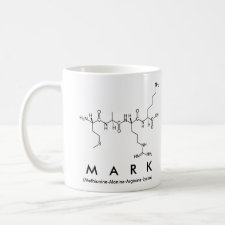
Authors: Salian VD, Byrne ME
Article Title: Crosslinking diversity on network morphology, template binding, and template transport of molecularly imprinted polymers prepared via living radical polymerization.
Publication date: 2013
Journal: Journal of Applied Polymer Science
Volume: 130
Issue: (5)
Page numbers: 3588-3599.
DOI: 10.1002/app.39568
Abstract: The objective of this work is to study the effects of altering the chain building blocks and the reaction on template binding and transport parameters of imprinted polymer gels. The characterization of imprinted poly(diethylaminoethylmethacrylate-co-hydroxyethylmethacrylate-co-polyethyleneglycol(n)dimethacrylate) polymer gels prepared via free (FRP) or living (LRP) radical polymerization with varying crosslinking monomer lengths (number of ethylene glycol repeat units of 1, ~4.5, ~9) and concentrations (1, 5, 10, 50%) is presented. All imprinted networks prepared via LRP exhibited significantly higher template binding affinities and capacities as well as significantly lower template diffusion coefficients compared to those prepared via FRP. Synthesizing imprinted polymers via LRP results in much smaller and relatively constant dispersities of polymer chains compared to imprinted polymers prepared via FRP. Therefore, LRP has a profound structural effect on the imprinted polymer network leading to increased homogeneity in the mesh structure which enhances the molecular imprinting effect. © 2013 Wiley Periodicals, Inc. J. Appl. Polym. Sci. 130: 3588-3599, 2013
Template and target information: diclofenac sodium, DS
Author keywords: living radical polymerization, crosslinking, molecular recognition



Join the Society for Molecular Imprinting

New items RSS feed
Sign-up for e-mail updates:
Choose between receiving an occasional newsletter or more frequent e-mail alerts.
Click here to go to the sign-up page.
Is your name elemental or peptidic? Enter your name and find out by clicking either of the buttons below!
Other products you may like:
 MIPdatabase
MIPdatabase









